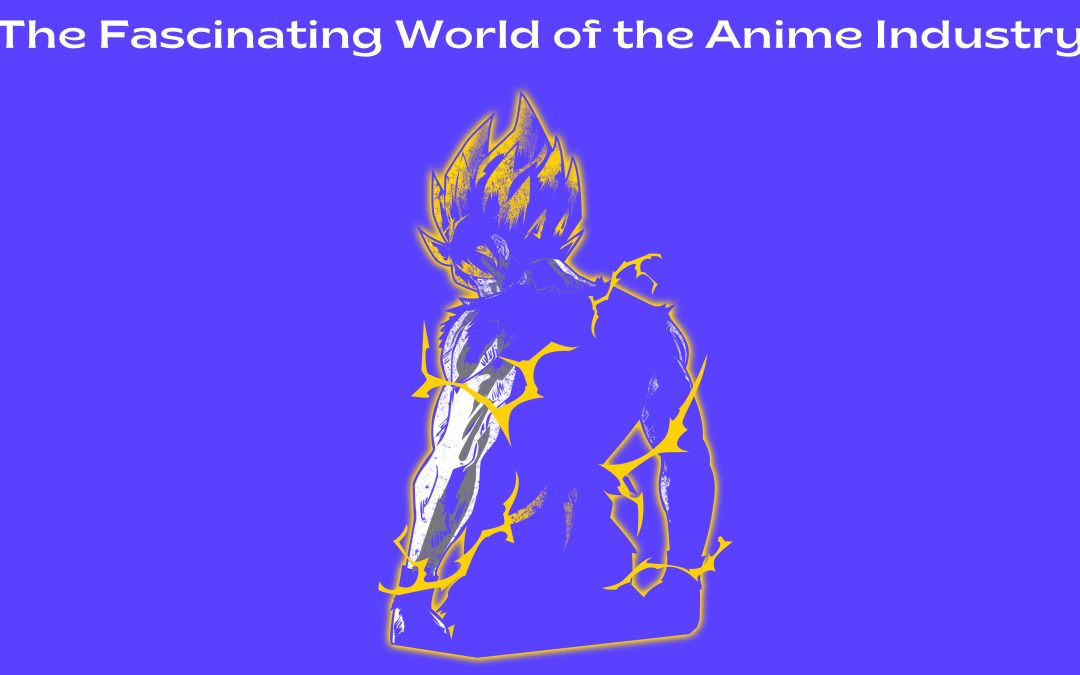Hey there, fellow anime enthusiasts! If you’re as passionate about anime as I am, you’re in for a treat. Today, I’m taking you on an exciting journey into the heart of the anime industry. Whether you’re a seasoned otaku or just dipping your toes into this colorful world, there’s always something new and intriguing to uncover.
The Enchanting Tapestry of Anime
Anime isn’t just entertainment; it’s a rich tapestry woven with creativity, imagination, and boundless possibilities. From the whimsical worlds of Studio Ghibli to the adrenaline-fueled battles of “Naruto,” anime has captured the hearts and minds of millions around the globe. But what exactly makes anime so captivating? Let’s explore.
A Fusion of Art and Technology
At its core, anime is a harmonious blend of traditional artistry and cutting-edge technology. Talented artists meticulously hand-draw each frame, infusing every scene with emotion and depth. But it doesn’t stop there. Advances in animation software and digital effects have pushed the boundaries of what’s possible, allowing for breathtaking visuals and seamless storytelling.
Animated:ztvrlsh4ofy= turkey
Did you know that the anime industry extends far beyond the borders of Japan? In countries like Turkey, “Animated:ztvrlsh4ofy= turkey” has emerged as a cultural phenomenon, captivating audiences with its unique blend of Eastern and Western influences. This global reach speaks to the universal appeal of anime, transcending language barriers and uniting fans from all walks of life.
A Brief History of Anime
To truly appreciate the anime industry, we must first understand its roots. Let’s embark on a journey through time and explore the evolution of anime:
1960s-1980s: The Golden Age
The 1960s marked the dawn of anime’s golden age, with iconic titles like “Astro Boy” and “Speed Racer” captivating audiences worldwide. As the medium evolved, groundbreaking series like “Mobile Suit Gundam” paved the way for a new era of storytelling and innovation.
1990s: The Rise of Anime
The 1990s witnessed an explosion of creativity, with seminal works such as “Dragon Ball Z,” “Sailor Moon,” and “Neon Genesis Evangelion” captivating audiences with their epic battles and complex characters. Anime became more than just a form of entertainment; it became a cultural phenomenon.
2000s: The Digital Revolution
With the advent of streaming services and online communities, the 2000s ushered in a new era of accessibility and connectivity. Hit series like “Naruto,” “One Piece,” and “Bleach” gained international acclaim, cementing anime’s status as a global phenomenon.
2010s: A New Frontier
The 2010s saw a surge of diversity and innovation, with a wealth of new genres and styles emerging to cater to ever-expanding audiences. From the dystopian drama of “Attack on Titan” to the superhero spectacle of “My Hero Academia,” anime continued to push boundaries and defy expectations.
2020s: The Future Awaits
As we enter a new decade, the future of anime is brighter than ever. With advances in technology and storytelling, the possibilities are endless. From virtual reality experiences to interactive storytelling, the anime industry is poised to captivate audiences in ways we never thought possible.
The Challenges We Face
Despite its many successes, the anime industry is not without its challenges. From labor issues to piracy concerns, there are several hurdles that must be overcome to ensure the continued growth and success of the medium. Let’s take a closer look:
Workload and Labor Conditions
Anime production is notoriously demanding, with animators often working long hours for minimal pay. This unsustainable work environment has led to widespread burnout and dissatisfaction within the industry. As fans, it’s important for us to advocate for better working conditions and support the talented individuals who bring our favorite shows to life.
Piracy and Copyright Infringement
Piracy remains a significant issue within the anime community, with illegal streaming sites and unauthorized distribution channels siphoning revenue away from creators and producers. While the rise of legal streaming services has helped combat piracy to some extent, there is still much work to be done to protect the intellectual property rights of content creators.
Market Saturation
With hundreds of new anime series released each year, it can be challenging for new titles to stand out in an increasingly crowded market. This oversaturation can make it difficult for creators to secure funding and resources for their projects, leading to a lack of diversity and innovation within the industry.
Embracing the Future
Despite these challenges, the anime industry remains resilient and adaptable, constantly evolving to meet the changing needs and desires of its audience. As fans, we have the power to shape the future of anime by supporting legal channels, advocating for the rights of creators, and championing diversity and inclusion within the industry.
Read more: A Simple Trick For Bet Revealed
Why I Love Anime
For me, anime isn’t just a hobby; it’s a passion. It’s about the thrill of discovery, the joy of exploration, and the connections we forge along the way. Here are just a few reasons why anime holds a special place in my heart:
- Rich Storytelling: From epic adventures to intimate character studies, anime offers a wealth of diverse and compelling narratives that resonate on a deep emotional level.
- Stunning Visuals: The artistry and attention to detail in anime are truly breathtaking, with each frame meticulously crafted to evoke a sense of wonder and awe.
- Community Spirit: The anime community is like one big family, united by our shared love of the medium. Whether it’s discussing our favorite shows, attending conventions, or creating fan art and fanfiction, there’s always a sense of camaraderie and belonging that makes the anime community truly special.
Join the Conversation
I’d love to hear your thoughts on the anime industry! What are some of your favorite anime series, and why? Have you noticed any interesting trends or developments within the industry lately? Let’s keep the conversation going in the comments below.
Until next time, keep exploring, keep discovering, and keep spreading the love for anime!



Recent Comments